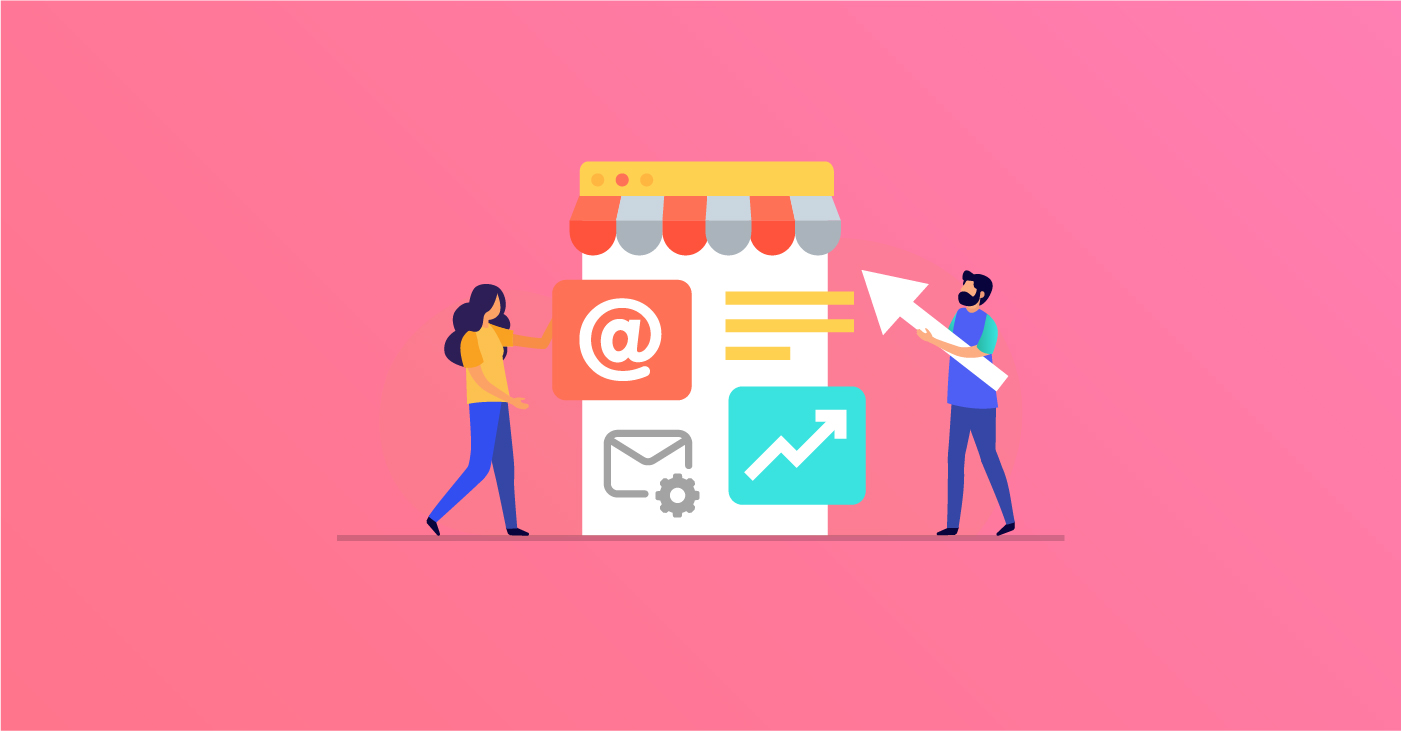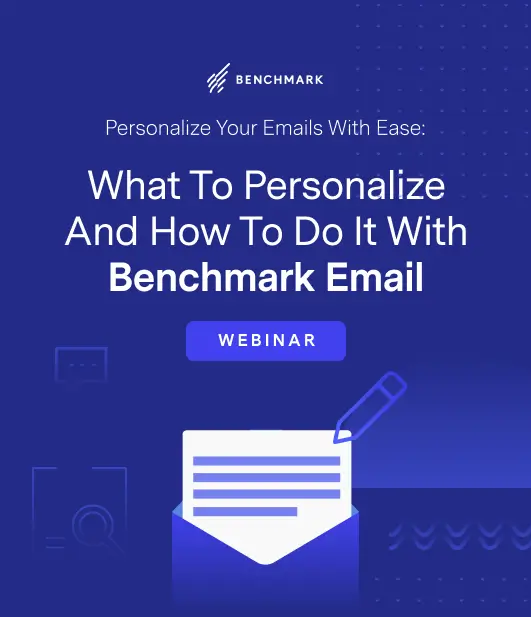6 eCommerce Personalization Strategies to Boost Customer Experience
August 4, 2022 7 min read

Customer segmentation, knowing your target audience, and highly targeted social media advertising are a few examples of personalized marketing dimensions.
Each of these forms the foundation of personalized marketing and advertising, but in eCommerce, personalized marketing goes beyond market segmentation and targeting. In this new era of eCommerce, it’s recommended that you customize the consumer experience for each unique user you hope to attract.
This article will cover all you need about personalized marketing and how to implement it in your marketing efforts.
What is Personalized Marketing?
Using data on a person’s behavior, preferences, and location, marketers can create a customized experience for their audience through the practice of personalized marketing.
Similar to how you might recommend a movie or product to a friend based on items you know they will enjoy, personalized marketing aids brands in identifying, converting, and keeping their most important customers.
Personalized marketing, as opposed to traditional marketing, which targets users widely, customizes the experience to clients based on specific data acquired from a range of sources:
- Surveys
- Demographics
- Customer intent
Brands that utilize personalized marketing know their customers and provide a customized user-specific customer experience based on the data gathered.
Although many businesses utilize personalized marketing, eCommerce brands trying to stand out from the crowd should perceive personalization as a vital tool in their arsenal.

Personalize Your Emails with Ease: What to Personalize and How to Do it With Benchmark Email
DOWNLOAD NOWWhy is Personalization Crucial in eCommerce?
A typical user views several daily ads across social media, email, video platforms, and other websites. As a result, most internet users are developing an aversion to marketing messages and sponsored advertising.
By offering personalized offers and content that consumers genuinely care about, there are higher chances for conversions.
Here are a few more pointers for why personalization is vital to expanding your eCommerce marketing efforts.
Personalized Marketing is Cost-Effective
Although personalized marketing is frequently more profitable for brands, it also costs less. According to recent research, personalization can enhance marketing spend efficiency by 30%.
Therefore, even though it can cost a little more to set up and begin a personalization campaign, your advertising budget will ultimately be more effective.
Personalization, however, should be an additional component of a multi-channel marketing plan that attracts customers and keeps them returning to your eCommerce store.
Customers Spend More with Personalized Marketing
Users receive personalized offers and campaigns based on their past browsing habits and other personal information. As a result, the recommendations are far more pertinent, improving sales by presenting clients with goods they are most likely to find appealing.
Almost half of all consumers claim to have bought a product or service due to a brand’s personalized recommendation. Even more impressive, only 5% of buyers returned their purchases, meaning that 85% of consumers were happy with the customer experience.
This indicates that personalization increases average order and customer lifetime value and improves eCommerce sales.
Personalization Drives Customer Loyalty
Because it costs less to retain existing customers than to acquire new ones, brands can benefit from personalization.
Consumers can feel a personal connection through personalized marketing, traditionally present when shopping in places like markets and malls. Today’s online shoppers have many more alternatives, yet most still prefer a customized experience.
People are growing accustomed to the customer personalization they experience on websites like Amazon and their social media news feeds.
Customers receive a unique experience with personalized campaigns, which can increase client loyalty.
Six eCommerce Personalization Strategies
Leverage Data to Enhance Experiences
Data is the cornerstone on which every marketer bases their decisions. However, because customer data is continually expanding, choosing which data to use for personalization can be challenging.
To create a frictionless experience, you must leverage data to enhance personalization strategies. However, not all the information you gather from visitors is helpful, and there are several hidden costs for bad data.
Here are the essential types of information to gather for successful personalization to make things simpler:
- Information about a person, including name, email, job title, and location (demographics)
- Data about a company, including its name, sector, number of employees, etc.
- Information about a visitor’s behavior while using your website or app, including information on the pages they viewed, the links they clicked, their average session length, and the number of visits.
- Information about a visitor’s particular characteristics like location, browser type, and time of day.
Your visitors must complete and submit a form for you to collect this information. This might be a lead magnet download, newsletter sign-up, or demo registration.
Following submission, you may add leads in your CRM software to obtain insights into lead activity, track the source of the lead, and automatically date and time stamp the lead.
With the right CRM, you can personalize experiences, boost lead scores in real time, and maintain up-to-date data to make smarter decisions.
Send Personalized Email Campaigns
Email marketing is a strategy that entails sending personalized newsletters and campaigns based on your client’s particular requirements and interests.
However, most emails end in the trash bin. The primary cause is that most brands send irrelevant content. Instead, people want emails that answer their needs, solve their problems, and provide value.
Here are some methods for customizing your email marketing approach:
- Put their first names in the subject line and copy.
- Communicate in a human voice. Speak in their language, and structure your messages for easier readability.
- Choose content that will address a persona’s issues. Every email should go to a persona-based segmented list of contacts based on their requirements and interests.
Another great tip for developing a personalized message is to segment your email list.
Use a platform with segmentation to streamline your email marketing so you can:
- Create specific email lists
- Schedule and start email campaigns
- Track people’s responses
A dedicated email marketing tool like Benchmark Email may help you create, send, and test effective email campaigns.
Create Personalized Opt-In Forms
While everyone uses a distinct set of techniques and approaches to get data from leads, most companies would concur that the email address is the one piece of information that cannot be overlooked.
A successful lead nurturing and email marketing strategy is built on opt-in forms. Creating a valuable lead magnet for your visitors and providing it to them for free is an excellent first step.
Additionally, you need to target your messages at a visitor’s particular interests and behaviors to draw in high-quality leads. Your opt-in tactics can be created using behavioral and contextual data to cater to each customer specifically.
You can create personalized messages for the opt-in forms that come on at the appropriate time, in the right place, and address the correct individual when you have access to such “personal” information about clients.
By doing this, you can add value and acquire those priceless email addresses. Lastly, a thank you page is an excellent chance to establish a more meaningful connection with your potential clients.
A thank you page can help you take personalization to the next level by:
- Linking to high-performing blog content
- Encouraging social sharing
- Providing discounts, or special offers
- Adding social proof to enhance credibility
- Requesting survey participation
Personalizing your opt-ins and thank you pages can help maintain high lead quality. Concentrate on tactics that prioritize building long-term business relationships to raise the standard of your interactions.
Chat with Potential Customers Live
Live chats make it possible for you to personalize a user’s experience.
In the past, live chats were a nice feature but challenging to incorporate into a website. Today’s businesses employ live chats on their websites to enhance conversations, conversions, and client retention.
Here are some live chat statistics to understand why:
- Customers choose live chat assistance 41% of the time, compared to 32% who prefer phone help.
- Customers who use live chat are 40% more likely to purchase online.
- If a business offers live chat, 51% of customers are likelier to make another purchase.
The effectiveness of live chat enables your sales team to interact directly with visitors and:
- Create better connections by expressing a warm welcome, using their language, and making their online experience more personable.
- Deliver more efficient interactions that prioritize customer happiness to improve conversions and boost sales.
You may design a customized experience that provides quick support or access to relevant educational material. Your sales staff can use data gathered through additional touchpoints, such as web forms, emails, or phone conversations, to more precisely and effectively answer the demands of leads and customers.
Target Customer Pain Points with a Knowledge Base
Customers demand responses to their pain points immediately, and the best way to satisfy their needs is to provide a self-service method of customer assistance.
Making a knowledge base, a compact library for all the essential knowledge about your company and its products is one of the simplest ways to accomplish this.
Here are some steps to creating a knowledge base for customer service:
- Define the core elements of your business
- Create a library of content
- Add visuals to make your knowledge base more pleasing
- Publish your knowledge base
- Ask for feedback to improve the user experience
With all this content, you can then repurpose it to create high-quality ads that target specific issues of your potential customers or use them as a guide for users that navigate your website.
The Takeaway
The eCommerce landscape can be challenging, especially for smaller organizations. Keeping up with fast-paced changes can crash the longevity of a brand. For this reason, many marketers need to find ways to overcome these challenges.
As a result, personalization is becoming a vital tool in your arsenal to improve your customer experience, increase retention, and ultimately sales. There are many different approaches to personalize your content which can be different for each brand.
However, one thing is certain: personalization can help your brand create a solid customer base of loyal customers, and it’s the blueprint for success in the long run.
Until the next one, keep personalizing each aspect of your business.
Author Bio
Alex works at Moosend as a content writer. He took a chance and moved from his professional architectural career to the field of digital marketing and hasn’t looked back. He enjoys traveling to new areas throughout the world in his spare time.







